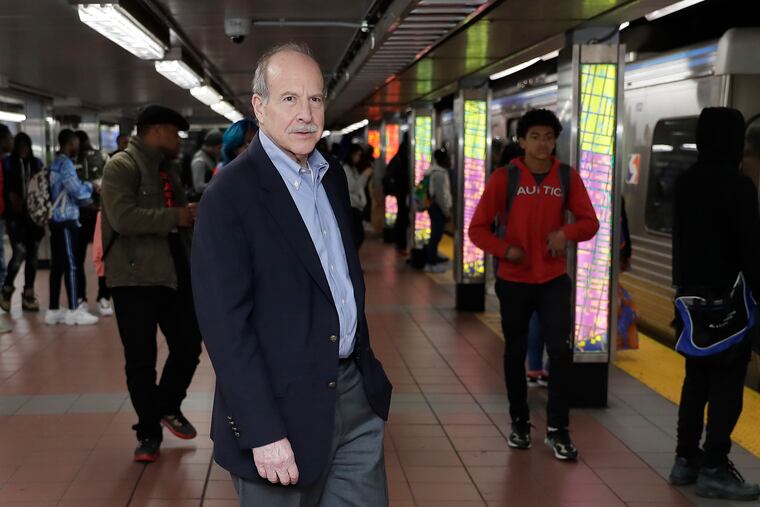How SEPTA won me back after years of car commuting | Perspective
One day last summer, when the Philadelphia heat was at its worst, I spent 15 agonizing minutes unsuccessfully trying to find an open space in the lot where I paid $35 every week

When my daughter Ann was a 2-year-old attending nursery school in Center City, we would ride SEPTA’s 42 bus from 44th and Spruce downtown. Because Annie was just a toddler, I always elbowed our way to the back of the crowded bus to find a seat. There, amid the pungent aroma of marijuana and clouds of smoke, we endured the 22-block commute.
A few years later — no longer having to transport Annie — I transitioned to SEPTA’s trolleys, the #34, which runs along Baltimore Ave., and the #13 traveling along Chester Ave. University City denizens know that SEPTA riders can position themselves on S. 43rd Street halfway between Chester and Baltimore Avenues and see in advance which trolley is heading their way and quickly walk the half block to the corner stop. The trolleys were an improvement over the bus, and the two lines reliably delivered me to 13th and Market, just a few steps from the old Inquirer City Hall bureau.
Time passed. Our family moved to Bala Cynwyd, and I began driving to work — first, to the old Inquirer building at 400 N. Broad St., then, to the Main Line Neighbors outpost in Wayne, and eventually to the Cherry Hill office, where I served as the New Jersey editor. I rationalized that because I worked out in the early morning, I didn’t need the walk to the train station or the all-too-frequent disruptions on what’s now the Cynwyd line.
Even when we moved back to Center City at Broad and Pine, an easy one-mile walk from The Inquirer’s headquarters, I persisted in driving. I paid for parking near 8th and Market and grappled with the daily hassles of clogged city streets, potholes that threatened to flatten my tires or decimate my shock absorbers, and parking lots that were often as frustrating to navigate as the surrounding streets.
At one of those lots, three men abducted a woman who worked on Jewelers Row, subdued her with a Taser, and dumped her miles away in a Darby cemetery. Even after that, I kept driving.
Every now and then during my long abstinence from SEPTA, I’d take the subway to the Palestra at Penn, to Temple or Drexel, or to the stadiums in South Philadelphia, and I would marvel at how the subway almost always outpaced a taxi destined for the same place on the streets above.
Still, I kept driving.
My reversion to public transportation has been both a revelation and a respite from the tensions of driving during rush hour on the streets above.
Then one day last summer, when the Philadelphia heat and humidity were at their worst, I spent 15 agonizing minutes unsuccessfully trying to find an open space in the lot where I paid $35 every week — a discounted rate for our company employees — for the privilege of parking. It was a watershed moment. Returning to work that day, I canceled my account for parking and, with a steely determination, decided to once and for all return to public transportation.
Since then, I have been a regular commuter on SEPTA’s Broad Street and Market Street subway lines, and on occasion, when traversing the streets of University City, I’ve climbed aboard the #34 trolley. My reversion to public transportation has been both a revelation and a respite from the tensions of driving during rush hour on the streets above.
Most days, the subway arrives within seven minutes or less and whisks me to my destination. I’ve found that seats are almost always available whether or not I use them. The sights and sounds on board have provided me with some new insights about my fellow SEPTA riders. It’s very rare to see anyone reading a newspaper. The number of riders texting, playing video games, or listening to music far exceeds the number of passengers reading anything — whether a magazine, a book, or something on their iPhones.
Having returned to public transit, I can say with certainty that I’m back to stay. There’s an added dividend: Now that I’m over 65, the rides are free.
Bill Marimow, vice president of strategic development for The Inquirer, was the editor in chief of The Inquirer from 2006 to 2017. He received the Pulitzer Prize for investigative reporting in 1985 and the Pulitzer Prize for public service in 1978. He first began riding the Broad Street Line to attend Phillies games at Connie Mack Stadium in the 1960s.